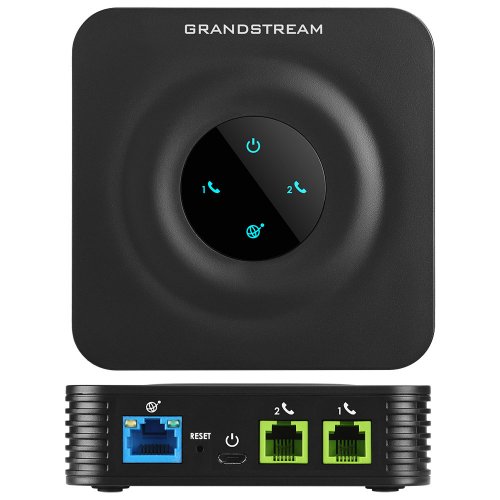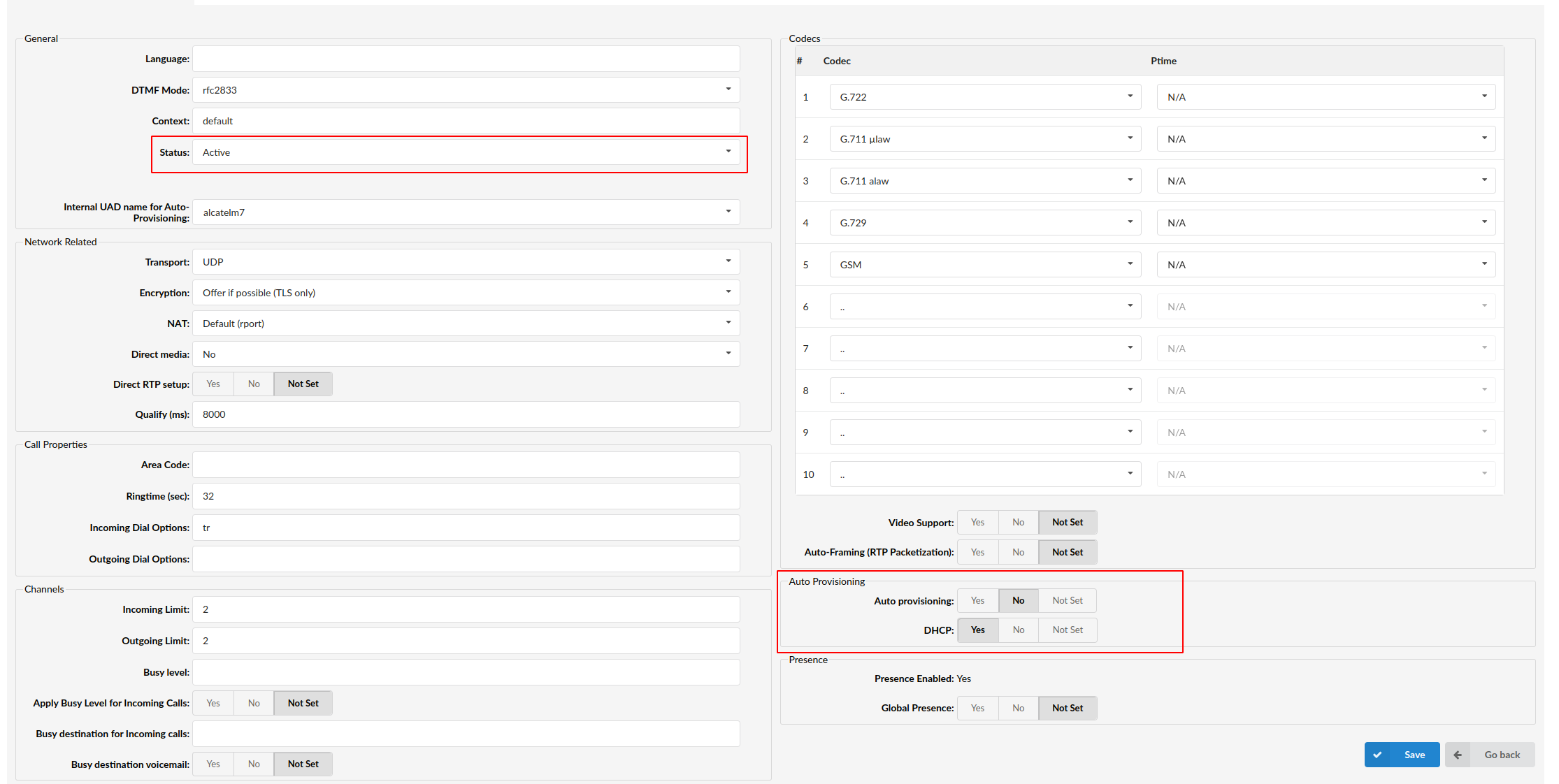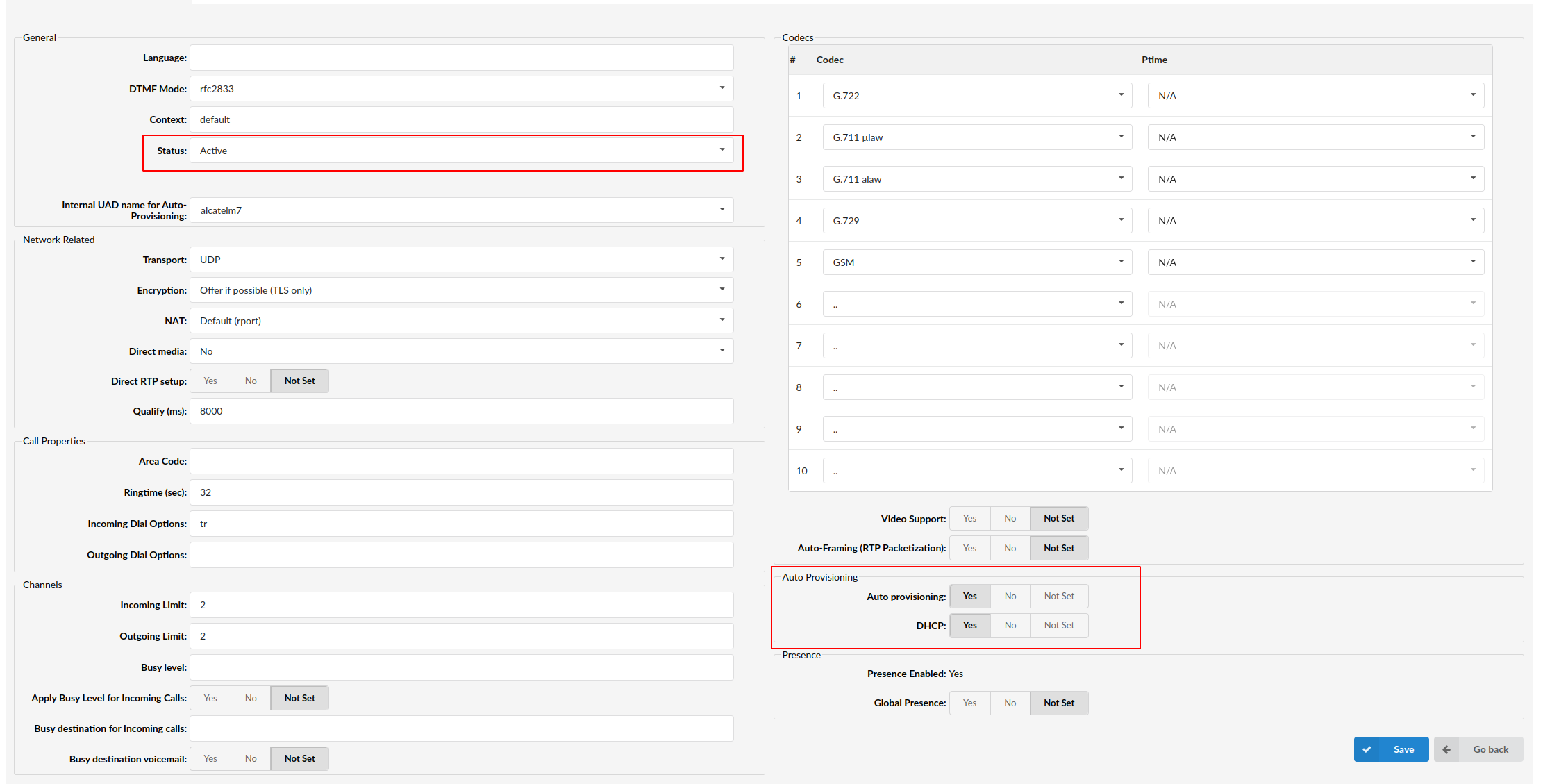¶ Introduction

This Configuration Guide is written as a general guide on how to configure the Grandstream device model HT-802 to work with PBXware 5.3.6.
¶ Requirements
¶ Identifying Phone Model
To start and successfully complete registration of your Grandstream device you need to know which phone model to set up.
On the back of each Grandstream phone, there is model information that you should check. Although various phone models can have exactly the same requirements and installation procedures, they can also have significantly different requirements and installation procedures, so that is why it is important to know the model you own which results in you setting up the device successfully.
¶ Phone Firmware
- Make sure that your device is loaded with an appropriate firmware version, 1.0.17.5.
- To find out the firmware version of your Grandstream device model, open a new browser window and enter your phone's IP address in order to access the phone's web administration interface login screen. Example: http://192.168.1.22.
- Log in to the device's web administration interface with your username and password. Please note that the default username is admin and the default password is admin.
¶ DHCP Server
Fully configured and operational DHCP server.
¶ PBXware Version
PBXware version 5.3.6
In order to find out the PBXware version:
- Log in to PBXware.
- Navigate to Settings: About.
On the top of About page, you may see a code similar to this one PBXware Edition: Business, Release: 5.3.6. (387597b7), Running: 1.8.32.1-gc-b47edc45, PBXware Proxy v5.3.6 (62b7bcd), API: 5.3, libmemcached version: 1.0.14, where Release denotes the current version of your PBXware.
¶ Installation
This section describes how to install and set up your Grandstream HT-802 for Manual configuration or Auto provisioning with PBXware.
¶ Basic Setup
- Connect the DC plug on the power adapter to the DC port on the device and connect the other end of the power adapter into an electrical power outlet.
- Connect the ethernet cable between the Internet port on the device and the network port on a router or switch to access LAN.
- Connect the analog phone to the Phone 1 port.
NOTE: The Grandstream HT-802 device has four analog phone ports, so if needed, four phones can be registered by using a single ATA device.
After you connected the analog phone to your HT-802 device, pick up the phone and dial:
- *** - enter the configuration menu
- 02 - the IP address announcement
Write down the IP address for your future reference. When the procedure above is completed, you should be able to reach the ATA web interface by entering the announced IP address into your browser's address bar.
¶ Reset to Factory Settings
This step is not required for brand new out-of-the-box devices, however, if the device has been already used then it is a must.
- Open a new browser window and enter your device's IP address in order to access the web administration interface login screen. Example: http://192.168.1.22.
- Log in to the web administration interface with your password. Please note that the factory default password is admin.
- Click the Basic Settings tab.
- In the Reset Type field, select Full Reset.
- Click the Reset button.
- Wait some time for a device to reboot.
NOTE: Do not unplug or remove power from the device while it is updating firmware and configuration.
¶ Registering phone
This section describes how to register the phone using Manual configuration or Auto provisioning.
The following topics are covered:
- Manual Configuration
- Auto Provisioning
¶ Manual Configuration
This section describes how to set UAD settings, create the PBXware Extension, and register a phone.
The following topics are covered:
- UAD Settings
- Creating Extension
- Registering Phone
¶ UAD Settings

UAD settings
Log in to the PBXware web administration interface.
- Open a new browser window and enter the IP address in order to access the PBXware web administration login screen. Example: http://192.168.1.10
- Log in to PBXware with your e-mail address and password.
UAD Settings
- Navigate to Settings: UAD.
- Make sure that the Grandstream UAD is enabled. To check the UAD's status, click the Edit icon corresponding to your Grandstream phone.
- Make sure that Status is set to Active, Auto provisioning is set to No, and DHCP is set to Yes.
- Click the Save button to save changes.
¶ Creating Extension

Creating Extension
Add the Extension
- Navigate to Extensions. Click the Add Extension button.
- The standard options window will be shown below.
- Select the Grandstream phone model from the UAD select box.
- Select Location: Local or Remote.
Local is for all Extensions registered on the LAN and Remote is for all Extensions registered from remote networks, WAN, Internet etc.
- Click the Next step button.
Extension Values
Enter values into the required field text boxes.
REQUIRED FIELDS:
- Name
Enter a name for the Extension being created. Example: John Smith.
Enter the e-mail address associated with this Extension. This e-mail address will receive all system notification messages. Example: john.smith@bicomsystems.com.
- Click the Save button.
1. Log in to your device's web administration interface.
- Open a new browser window and enter the ATA IP address, for example 192.168.1.57
- Log in to the web administration interface by entering a password. (The default password for Grandstream web administration is admin).
- Navigate to the Profile 1 tab.
Enter the Hostname or IP Address of PBXware in the Primary SIP Server field.
- Example of a Hostname: voip.bicomsystems.com
- Example of an IP Address: 192.168.1.10
Click the Apply button at the bottom of the page.
- Navigate to the FXS Ports tab.
Enter or set the following details into respective fields.
SIP User ID
- The PBXware Extension number. Example: 1003
Authenticate ID
- The same number as the SIP User ID.
Password
- The Secret of the Extension as received in the e-mail associated with this Extension. Example: _%Z4M3*Ts9y7. The password is generated automatically for each newly created Extension.
Name
- Usually the same number as the SIP User ID.
- Click the Apply button.
Dial *123 to verify registration.
¶ Auto Provisioning
This section describes how to set UAD settings, create the PBXware Extension, and register a phone using DHCP or Static IP address.
The following topics are covered:
- UAD Settings
- Creating Extension
- Registering Phone
¶ UAD Settings

UAD settings
Log in to the PBXware web administration interface.
- Open a new browser window and enter the IP address in order to access the PBXware web administration login screen. Example: http://192.168.1.10.
- Log in to PBXware with your e-mail address and password.
UAD Settings
- Navigate to Settings: UAD.
- Make sure that the Grandstream UAD is enabled. To check the UAD status, click the Edit icon corresponding to your Grandstream phone.
- Make sure that Status is set to Active, Auto provisioning is set to Yes, and DHCP is set to Yes.
- Click the Save button to save changes.
¶ Creating Extension

Creating Extension
Add the Extension.
- Navigate to Extensions. Click the Add Extension button.
- The standard options window will be shown below.
- Select the Grandstream phone model from the UAD select box.
- Select Location: Local or Remote.
Local is for all Extensions registered on the LAN and Remote is for all Extensions registered from remote networks, WAN, Internet etc.
- Click the Next step button.
Extension Values
Enter values into the required field text boxes.
REQUIRED FIELDS:
- Name
Enter a name for the Extension being created. Example: John Smith.
Enter the e-mail address associated with this Extension. This e-mail address will receive all system notification messages. Example: john.smith@bicomsystems.com
- Auto Provisioning
Set to Yes.
- MAC Address
Enter the Grandstream phone's MAC address. Example: 0004F2FF1536. MAC address can be found at the back of the phone.
1. Log in to your device's web administration interface
- Open a new browser window and enter the ATA IP address, for example 192.168.1.57
- Log in to the web administration interface by entering the password. (The default username is admin and the default password is admin).
- Navigate to Advanced Settings.
- Choose what server type you intend to use: HTTP, HTTPS, or Trivial FTP. NOTE: Our recommendation is to use HTTP.
If you choose to use the HTTP or HTTPS server type, enter the Hostname or IP Address followed by /prov.
Example of a Hostname using HTTP: abc.bicomsystems.com/prov
Example of a Hostname using HTTPS: abc.bicomsystems.com/prov
Example of an IP Address using HTTP: 192.168.1.10/prov
Example of an IP Address using HTTPS: 192.168.1.10/prov
- Enter the Auto Provisioning username and password into HTTP/HTTPS User Name and HTTP/HTTPS Password fields.
If you choose to use the TFTP server type, enter the Hostname or the IP Address.
Example of a Hostname: voip.bicomsystems.com
Example of an IP Address: 192.168.1.10
- Scroll down to the bottom of the page and click the Apply button to save changes.
- Go to Advanced Settings again, scroll down to the bottom of the page, and click the Reboot button to save changes.
- The Auto provisioning process will start during the reboot process. A phone should pick up an appropriate configuration file from PBXware. If everything is done as described above, you should have successfully registered your device to PBXware.
Dial *123 to verify registration.